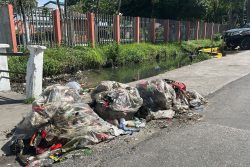Given the tortured electoral history of the country and the ease with which it could be spun into top gear, the rumblings about distorted images on the new ID cards being distributed by the Guyana Elections Commission were exceedingly worrying.
ID cards cannot be taken lightly in this milieu. For a different reason, they were the cause of the vitiation of the result of the 1997 general election after the petition on behalf of the PNCR challenged the legality of the requirement for the cards before casting a ballot. It was found that this requirement was ultra vires Articles 59 and 159 of the Constitution and the decision was made notwithstanding an agreement in Parliament for the use of the cards. Therefore, any troubles linked to the cards and in this instance the possibility that voters could encounter difficulties being recognized and possibly not being permitted to vote on polling day would naturally trigger alarm bells.
It is therefore heartening that GECOM has frontally addressed the matter and has set out the remedial measures that will be employed. Its press release on Friday disclosed that thus far 1,071 ID cards had been returned to GECOM as of December 14 – this being 0.3% of the 327,225 cards distributed thus far. That latter tally in itself represents 76.2% of the total number of ID cards produced. It is however likely that there are more cards with distended or darkened images which the holders might not have made an issue of at the uplifting of the cards as they might have been more keen on its transactional value in day to day business. GECOM has made clear that these persons will be able to have their images retaken during the upcoming claims and objections period and the fullest advantage should be taken of this.
Those who will be uplifting cards will also have the opportunity to request that their photographs be taken again on the spot. Staff at the distribution centres will however have what the commission says is a “collective say” on if the request is warranted to ensure that there is no abuse. While this is reasonable it must however be recognized that come polling day the risk of disenfranchisement will be borne solely by the registrant and therefore he/she must be permitted some avenue of appeal if there is a strongly held view that the image be retaken. There should also be a role for party scrutineers in this decision.
What might have exacerbated the problem at some distribution centres was the varied advice and postures of those in charge when questions were raised by registrants. GECOM’s press release said that cognizance has been taken of complaints from members of the public that some of the staff had “been less than helpful …Some such staff have reportedly refused to accommodate the requests on the falsehoods that (i) they are not in possession of a camera, (ii) the registrant would have to visit the main Registration Area Office to have his/her photo retaken, or (iii) the photograph could be retaken only during the upcoming Claims and Objections exercises”. GECOM said that in light of this it has handed down clear instructions for all registration officers to take the necessary steps to assuage the concerns of registrants particularly in relation to the quality of the photographs. Differing advice from staff all supposedly exposed to the same training has been a longstanding affliction of the electoral system and must be continuously addressed.
It is troubling, however, as acknowledged by GECOM, that despite the quality control procedures that had been put in place defective cards still seeped through and into the distribution pipeline. Surely at the stages where the photograph is printed and the lamination is done these problem pix should have been immediately flagged and drawn to the attention of supervisors.
This lapse points to the need for even tighter controls in quality assurance. More so as many attributes of the voting process rely on assuring all sections of the population about accuracy and transparency and these in turn are pivotal to nourishing confidence in the system that would encourage voters to exercise their franchise at the local and general elections.
It would be remembered that much effort at the political level and significant resources have been injected into the current process to satisfy the concerns of all sections of society. After much disputation a fresh registration process was pursued to compile a pure register from which the list of electors for the upcoming polls could be culled. This purification process will now become the foundation of continuous registration for all future elections. It was also then agreed that new ID cards would be produced at great cost as part of the confidence building measures and to enable the use of a state-of-the-art ID document.
Nothing should be permitted to sully or irreversibly taint the electoral process in such a manner as to lead to the jeopardy that enmeshed the result of the 1997 elections. It is therefore imperative that GECOM, the political parties and other stakeholders with an abiding interest in the holding of credible and verifiable elections ensure that there is full rectification of the ID card problem as soon as is practicable and that some means be available for continuous assessment of the extent of this problem. Too much is at stake.









